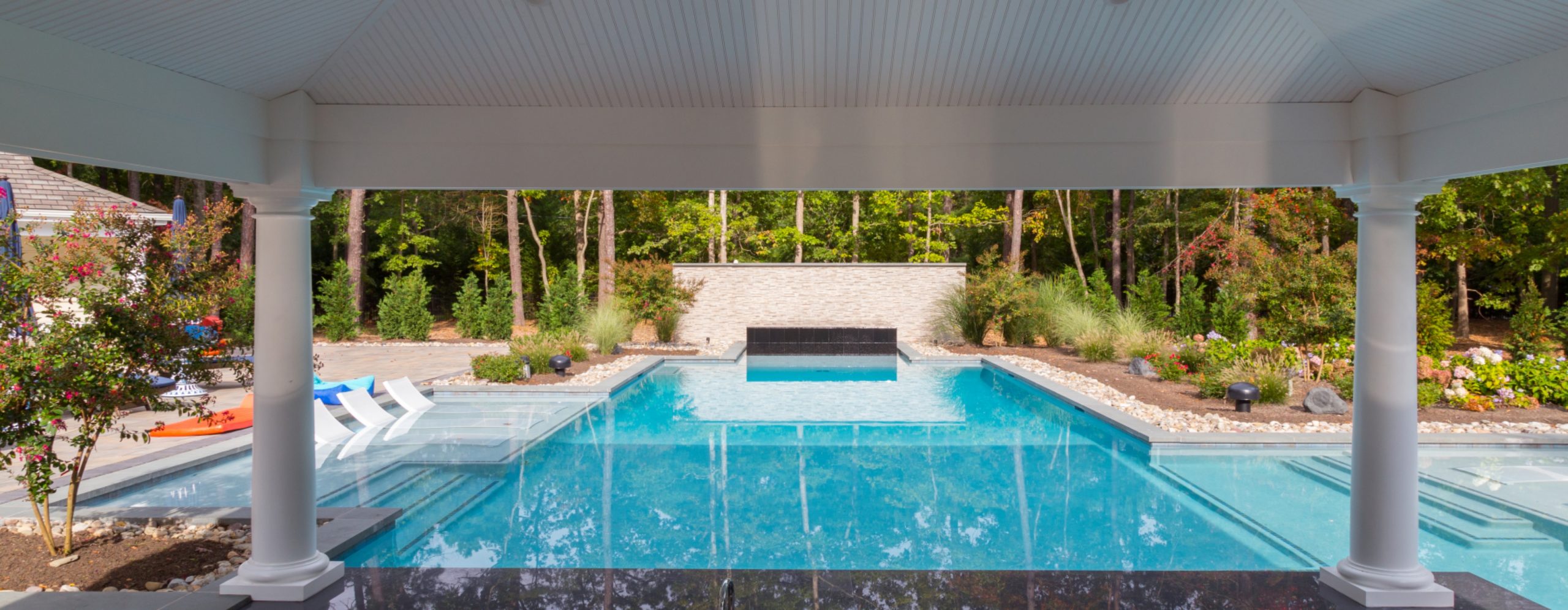The Art of Emphasis: How Focus Adds Appeal to Your Outdoor Living Space

Emphasis: It’s like creating a stage for the stars of your WaterSpace Design. If you’ve recently sold or read about selling a house, you’re probably familiar with the growing use of professional staging to lift a property’s value. The secret of staging rests in part on the art of Emphasis, the third of the six principles of design in our series.
When you set the scene by spotlighting a star in your design, you add luster to the entire environment. It’s a matter of focused appeal. Finding your emphasis may require adding something new, but just as often your design team can help you discover, develop and highlight a star attraction that could have been overlooked.
Focus and the Art of Emphasis
The art in Emphasis is not just calling attention to a star feature but rewarding the viewer’s focused attention. You want to create a layered experience akin to viewing a work of art. There’s the striking view from the distance and the greater detail to be seen up close. The more viewers move in closer to focus on the art, the more rewarded they feel.
In a previous article on the Design Principle of Contrast we looked at how contrast adds interest in water oriented outdoor living spaces. You’ll notice how both Contrast and Emphasis set out to make a design more interesting. Both are quite good at their jobs. But where contrast draws momentary attention, emphasis captures and holds attention.
Indeed, Contrast may be noticed only unconsciously. Even with High Contrast, the viewer’s attention is more diffuse than with Emphasis. You may notice the contrasting elements of a design—the nicely placed accent piece, the pleasing interplay of light and dark, of colors and textures and shapes—but none of it is intended to hold your eye. Emphasis, on the other hand, is about capturing, holding, and rewarding attention.
When considering the elements for emphasis, be sure to consider both space and movement through the larger space. For your “performing art” to receive proper emphasis, it needs artful placement in its space. But what you’ll see in your space—what role each element plays—changes with movement.
Different Stars for Different Scenes
Like in the movies, there can be more than one player in a starring role. As a play or a movie moves forward, settings and scenes change, and the role each actor plays grows, diminishes or even disappears. As you move though a well planned and executed outdoor design, you’ll discover it has more than one setting—a different point of emphasis, a different star to entertain your attention from each new perspective.
Coming up next: Stars, Stage and Mood
In choosing your stars and creating your space, look beyond technique and think about the mood you want to create. All three—star, stage (space), and mood—need to work together.
In the next edition we’ll look at the elements of emphasis, the art of placement, and the moods they engender. Water features, artistic works, architectural features, the natural setting, the things you plant, and the colors and materials you employ all play important supporting roles—some may even become stars. It’s all a matter of Emphasis.

